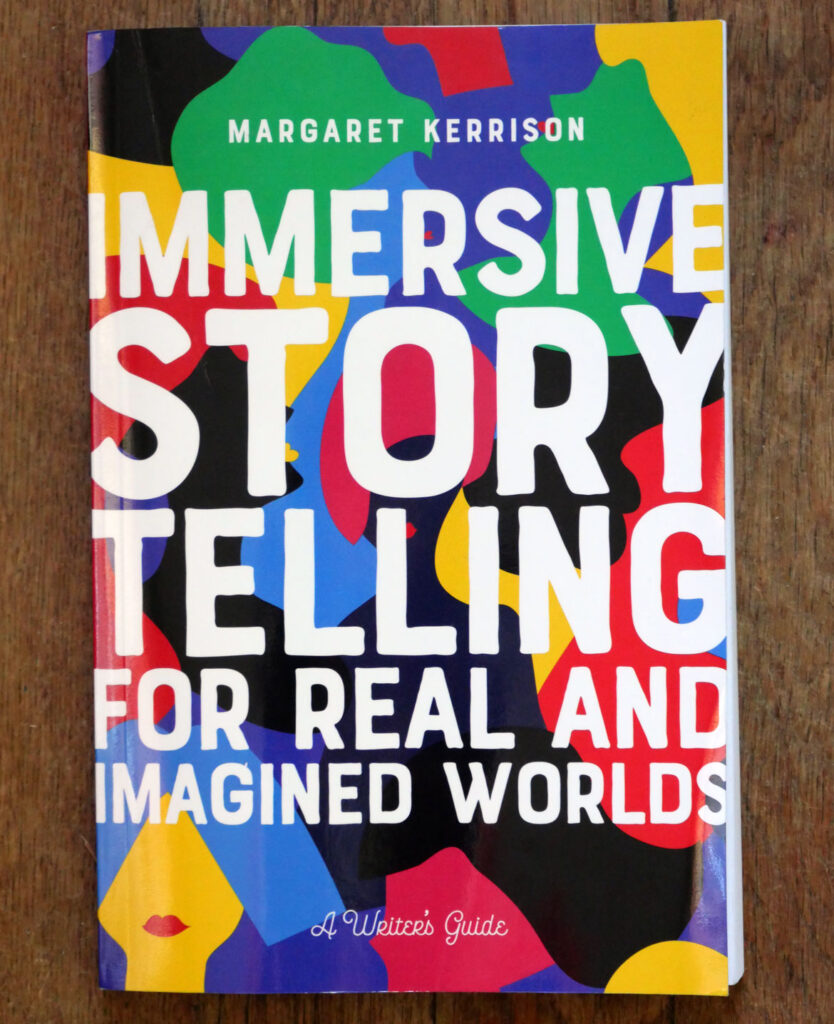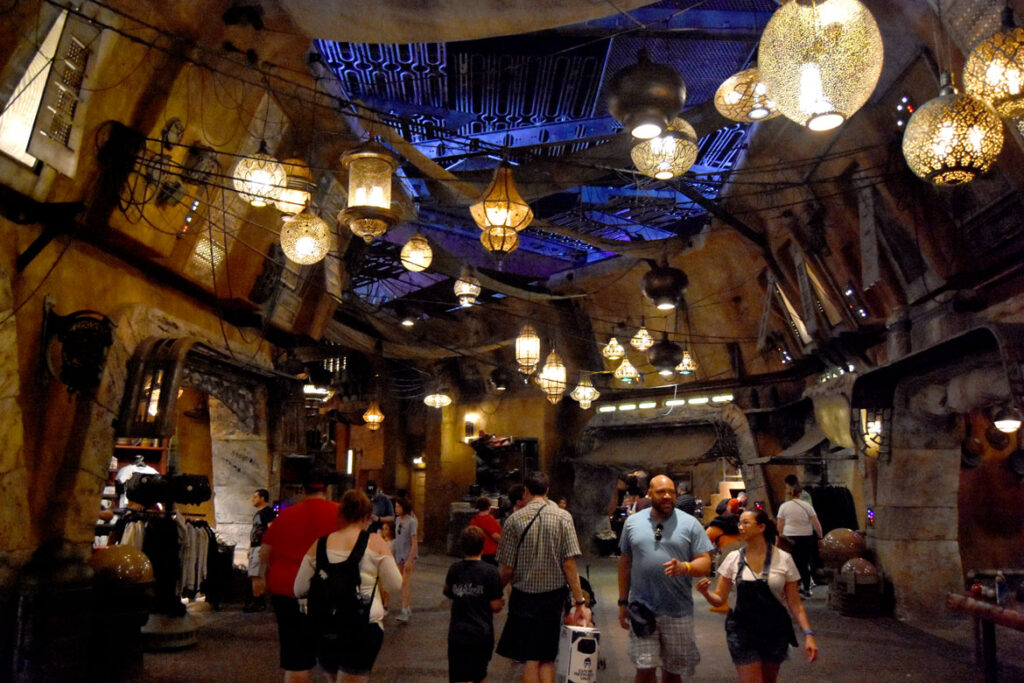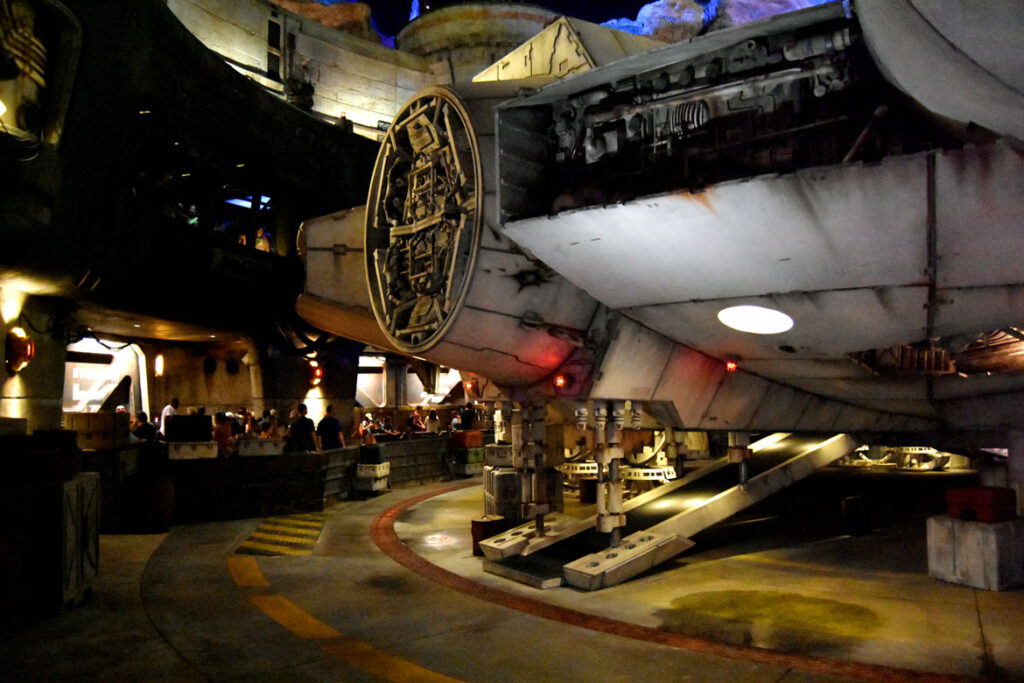The idea of “Adventure Thru Inner Space” at California’s Disneyland was that riders were miraculously shrunk down to the size of ice crystals to experience the microscopic world. People waiting in line after the ride opened in 1967 saw visitors getting into carts that rolled into a massive machine and appeared to come out the other end reduced to the size of toys. In fact, what rolled out the other end were small models with dolls riding inside.
The illusion could be quite convincing. “My little boy went in 20 minutes ago, and he was supposed to wave to me when he got into the little shrunken area in the microscope. … So far, none of those little people have waved to me!” Disney ride designer Tony Baxter once recalled a worried mother telling him early in his career when he was a ride operator at Disneyland.*
In Margaret Kerrison’s new book “Immersive Storytelling for Real and Imagined Worlds” (Michael Wiese Productions), she recounts an anecdote from Disney designer Dave Durham when he was in line for the ride in the 1970s. “As a young Black boy, he was horrified by what he saw in the queue,” Kerrison writes. “…The miniaturization wasn’t the traumatic part for Dave. It was the idea that everyone in the ride vehicles turned into white people, as demonstrated in the show’s moving prop of everyone coming out of the other end of the tube as mini white figures sitting in the ride vehicles. He cowered and told his family, ‘That machine turns you white!’
The lesson for theme park creators? “You want your experience to be representative and inclusive of your audience. If they don’t ‘see’ themselves in the experience or feel that they haven’t been ‘invited to the party,’ then they are less likely to be engaged or emotionally invested,” Kerrison explains.

The creation of theme parks—and Disney’s in particular—is often talked about as a mix between Hollywood set design and urban planning. Picture white guys building lots of scale models. Kerrison shifts the emphasis to the storytelling that shapes the rides, spaces and what staff members say.
“Immersive Storytelling for Real and Imagined Worlds” is a primer summarizing the jobs of a theme park writer, including dreaming up concepts and writing scripts, wayfinding, marketing, product descriptions, staff training guides, staff spiels. Kerrison’s focus is developing immersive experiences around corporate-owned characters and stories, always with attention to how you exit through retail shops.
Born in Indonesia, raised in Singapore and based in Burbank, California, Kerrison has been a writer or story developer for the Disney parks’ “Star Wars” land called “Galaxy’s Edge,” Disney’s Avengers campus, the National Geographic headquarters, and NASA’s Kennedy Space Center Visitor Complex. She says, “I’ve written stories for experiences about beer, an old state capitol, wildlife, rocket science, cosmetics, K-pop, the history of telecommunications, Bollywood, the weather, superheroes, and the Jedi.”
In developing “Galaxy’s Edge,” Kerrison recounts guidance that “Star Wars” filmmaker George Lucas taught “Star Wars” creative director Doug Chang: “If in three seconds visitors didn’t believe that they were looking at something from ‘Star Wars’ then the design needs to be rejected or changed. That’s how quickly it takes for our visitors to read a scene and make sense of it. … Don’t give them a reason to stop believing.”

Knowing Kerrison’s broad experience, I can’t help wishing that she offered more examples from her work and that of colleagues demonstrating how design and storytelling problems are solved and what theme park writing looks like.
In addition to her emphasis on inclusion, Kerrison’s insight is how to engage your audience’s dreams of becoming part of beloved stories. “Combine your audience’s wish fulfillment with the action and your audience will be transformed,” Kerrison writes. In other words, you become part of the world of Harry Potter by riding along with Hagrid on the “Magical Creatures Motorbike Adventure” rollercoaster at Universal’s Islands of Adventure park in Florida. Or you become part of “Star Wars” by helping pilot the Millennium Falcon in the Disney parks’ “Smugglers Run” flight simulator. Kerrison writes, “By wishing to do something and doing the action, they will ultimately become closer to becoming the role.”
* See David A. Bossert’s “Claude Coats: Walt Disney’s Imagineer.”
If this is the kind of coverage of arts, cultures and activisms you appreciate, please support Wonderland by contributing to Wonderland on Patreon. And sign up for our free, occasional newsletter so that you don’t miss any of our reporting. (All content ©Greg Cook 2022 or the respective creators.)

